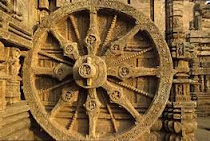No trace of trance on Hindu soil

One of the most important terms, recently in use is ‘trance,’ the Hindu philosophy has no trace of this word in different philosophies. The meditation, prayer and dhyana are the common words used in spiritual sense. Yoga used the Dhyana as one of the tributary of eight fold part. The Yoga used Samadhi as the last resort of this practical philosophy in which it explained the consciousness as transcended and generated some power. Even the Buddhist philosophy talked about transcendental of consciousness but do not used the term trance. Trance a stage in which stupor or stage of coma or stoppage of consciousness is felt even when the individual is conscious. The condition is like feeling the consciousness away from the body and then realizing something. Sometimes it is realized as sub-consciousness state. The word trance is usually used by Western writers in explaining the mass ritual or the spirit of dancing in which the dancer of participant in the mass ritual realized that his c









